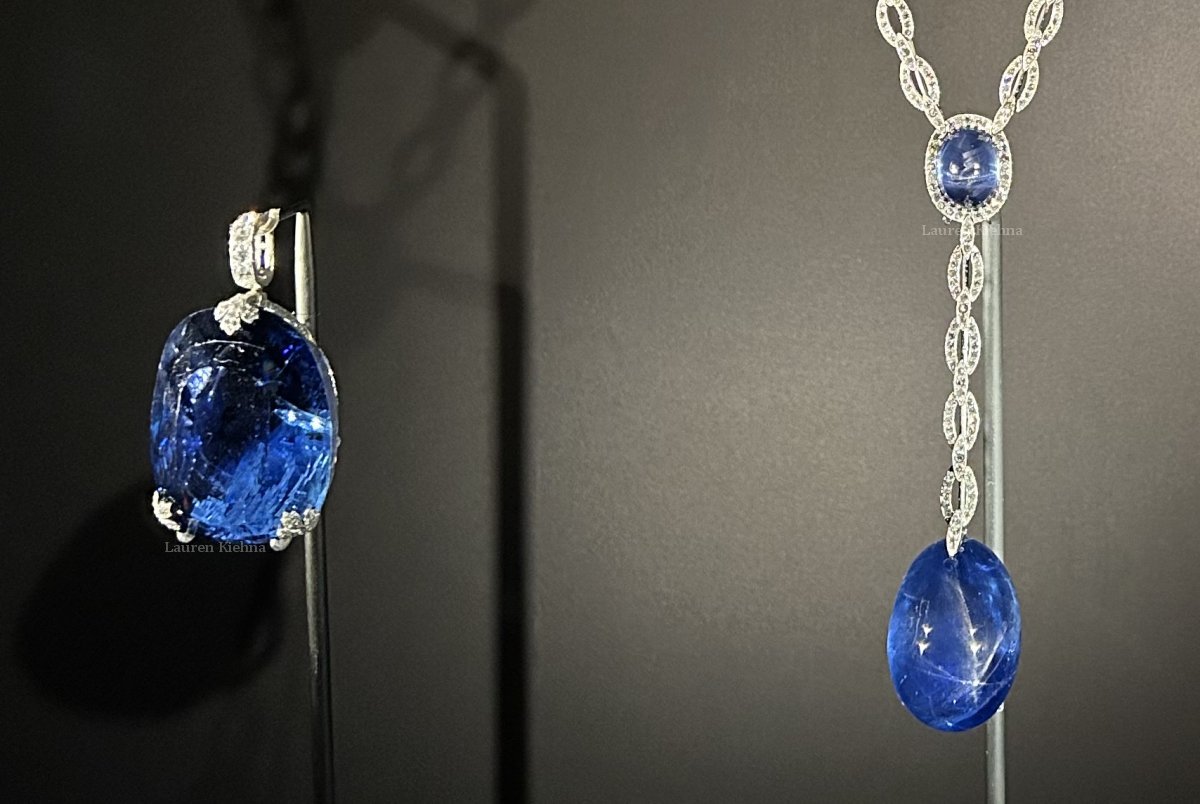
Visitors to the Cartier exhibition running now at the V&A in London have the chance to marvel at a special pair of enormous sapphires, once owned by two very interesting royal sisters: Queen Marie of Romania and Grand Duchess Victoria Feodorovna of Russia.
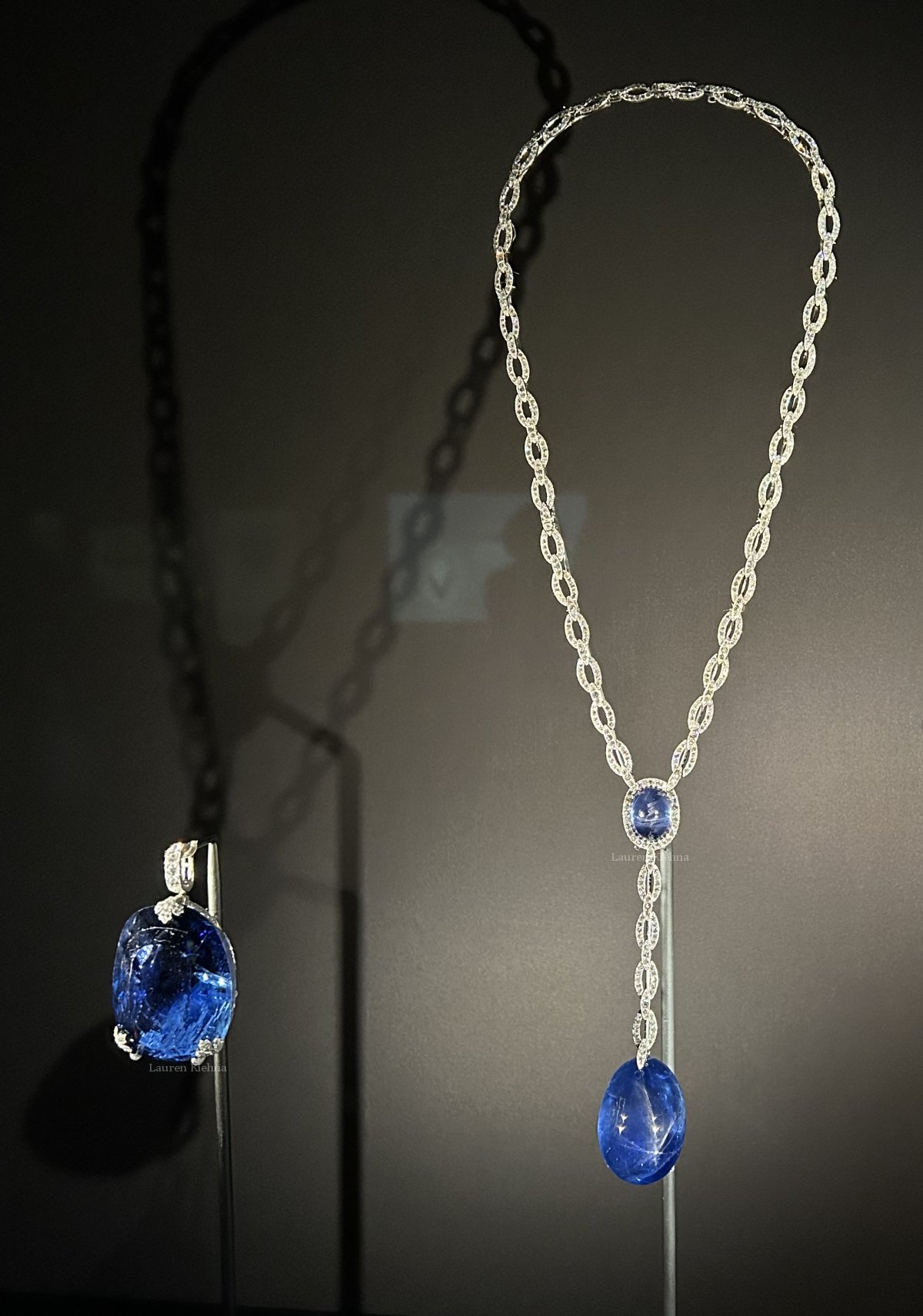
In a room filled with colorful gemstones, between bright red rubies and electric green jade, two special sapphire pieces are displayed as part of Cartier, the current exhibition at the Victoria & Albert Museum in London. On the left, an enormous 478-carat sapphire is set in a diamond-accented pendant. To the right is a sautoir-length diamond necklace set with two star sapphires, the larger of which is a 311-carat gemstone.
The plaque that accompanies the two pieces in the V&A exhibition notes, “The sapphire mines of Sri Lanka have consistently yielded larger gem-quality stones than any other place in the world. These 311-carat and 478-carat sapphires were two of the largest known when Cartier set them in 1911 and 1913 respectively.”
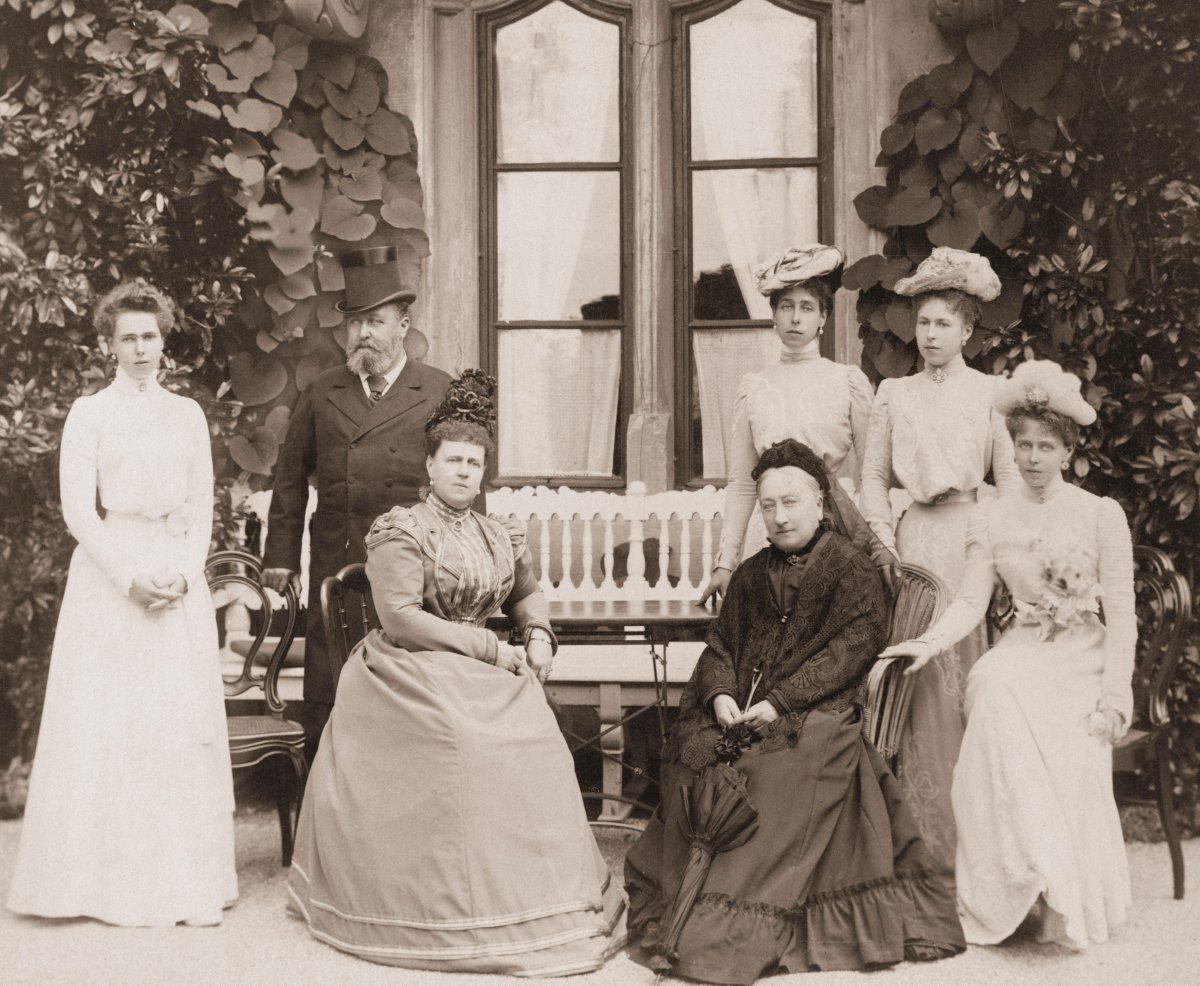
Who could afford such magnficient, rare gemstones? The royal husbands of a pair of princesses, of course. The women who owned these two sapphires jewels were sisters, both granddaughters of Queen Victoria. They were Marie and Victoria Melita, two of the five children born to Prince Alfred, who was first Duke of Edinburgh and then later Duke of Saxe-Coburg and Gotha, and his Romanov wife, Grand Duchess Maria Alexandrovna of Russia. After their splendid imperial wedding in St. Petersburg in 1874, Alfred and Maria quickly welcomed three children in three years: Prince Alfred (“Affie”), Princess Marie (“Missy”), and Princess Victoria Melita (“Ducky”).
Two more daughters, Alexandra (“Sandra”) and Beatrice (“Baby Bee”), followed in the ensuing years. On the occasion of Baby Bee’s confirmation in August 1899, the Saxe-Coburg and Gotha family posed for this group portrait at Rosenau. From left to right: Princess Beatrice, the Duke, the Duchess, Dowager Duchess Alexandrine, Princess Victoria Melita, Princess Alexandra, and Princess Marie. Sadly, by this time, the couple’s eldest child, Affie, had died. Eventually, the dukedom would pass to another royal cousin, the young Duke of Albany.
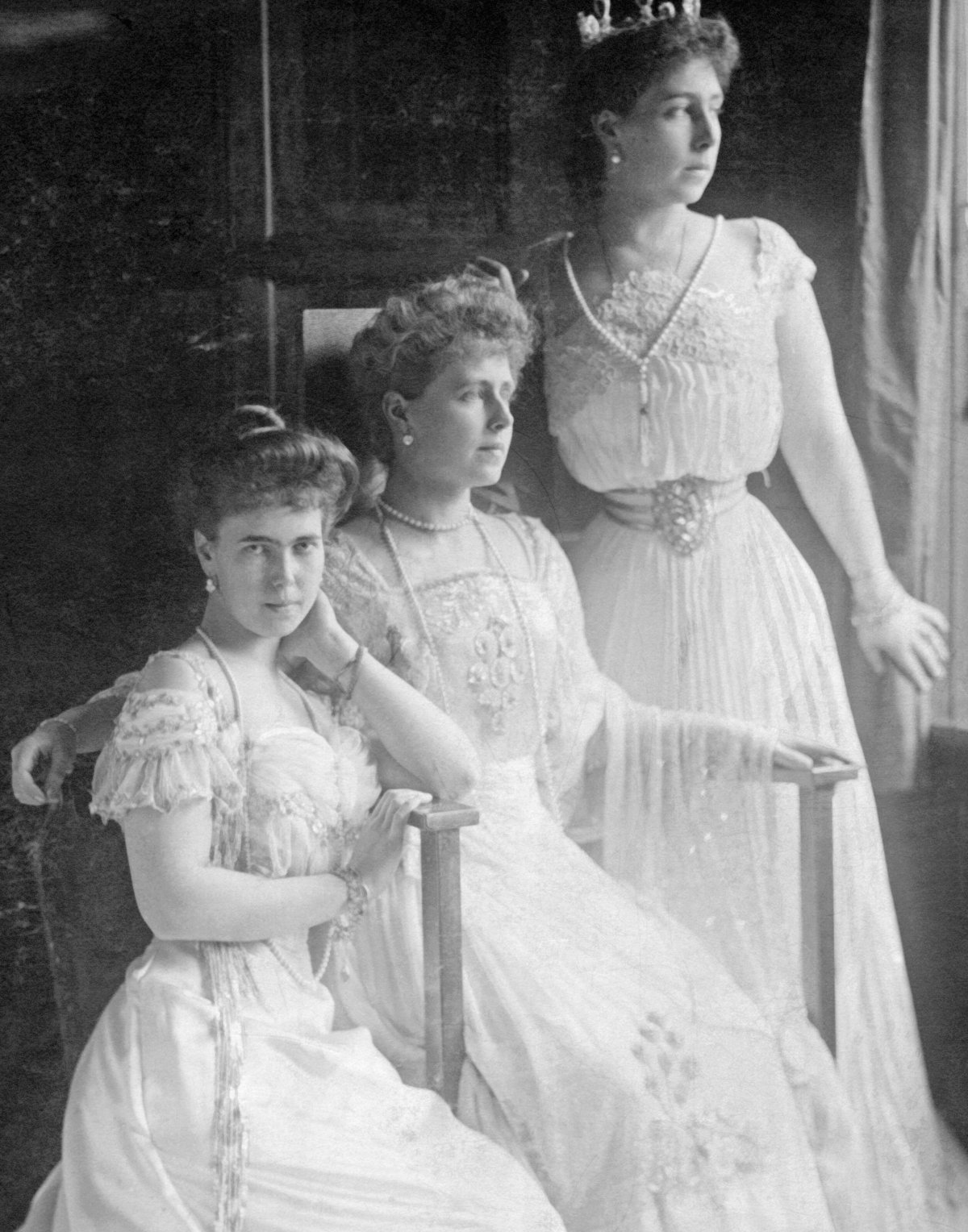
All of the sisters ended up marrying into other royal families, through matches engineered in part to shore up diplomatic ties between the royal family and their allies and relations abroad. The sisters’ marital stock rose in 1893 when their father, Prince Alfred, inherited the Saxe-Coburg and Gotha dukedom from his uncle, the late Prince Ernst. Now the daughters of a reigning German duke, who was also the son of a Queen-Empress, the four girls were sought after as royal brides.
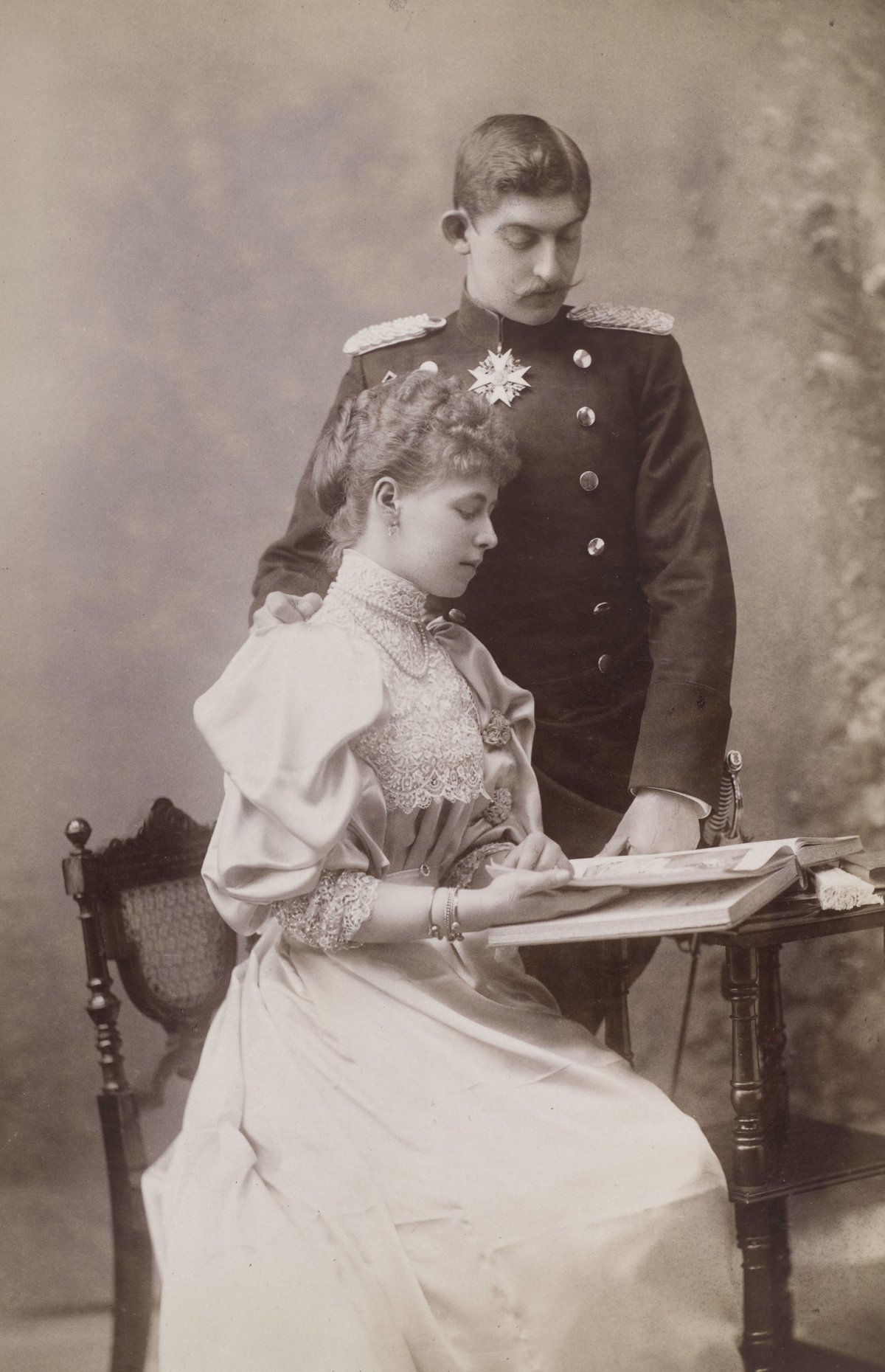
In January 1893, Princess Marie became the first to marry. After a courtship engineered by her parents and his uncle, Marie became engaged to Crown Prince Ferdinand of Romania. Her grandmother, Queen Victoria, was positive but wary, calling Ferdinand “nice” but fretting that “the country is very insecure.” Just nine months after the wedding, Marie gave birth to their first child, Prince Carol. Five more children followed over the next two decades.
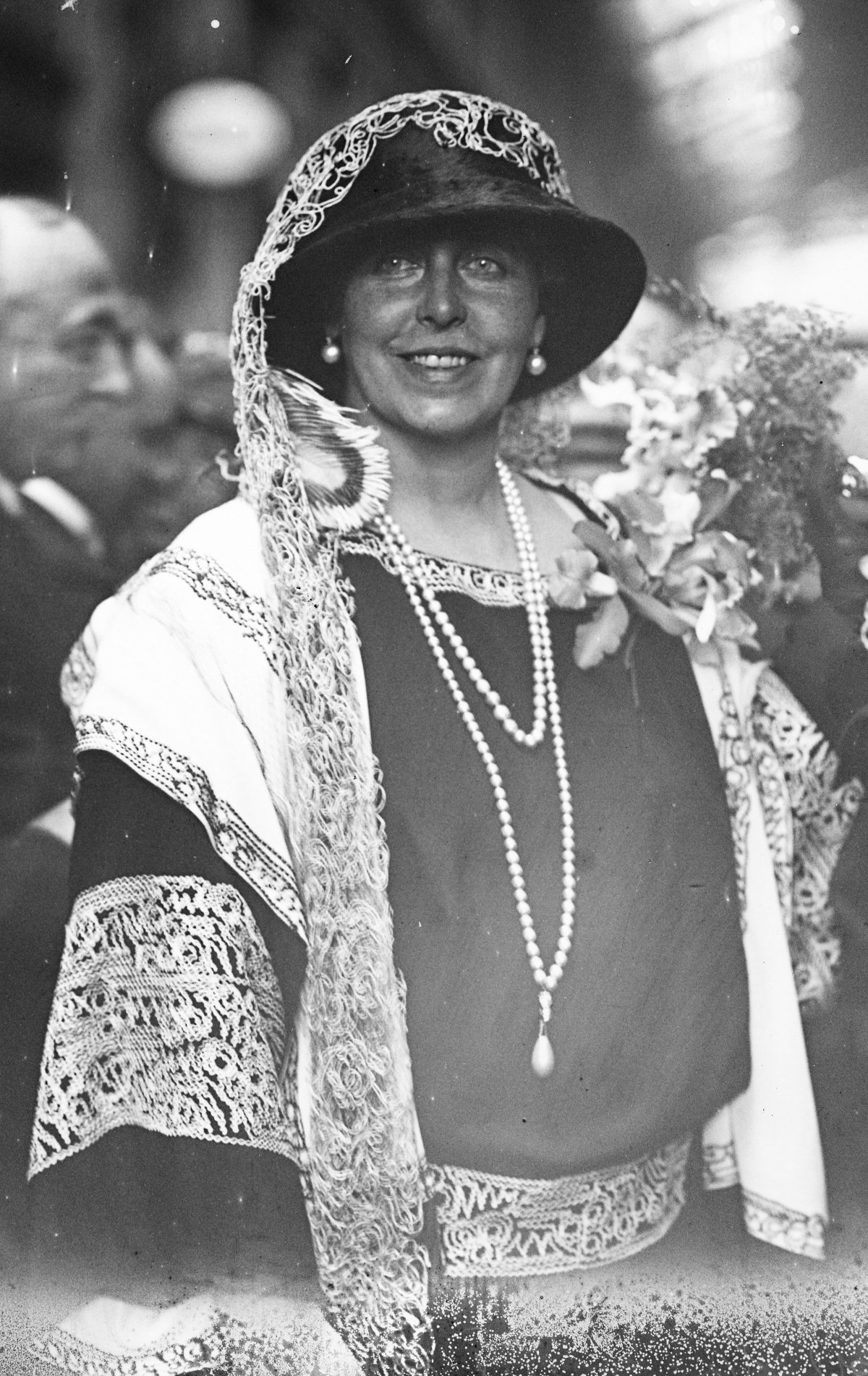
Ferdinand and Marie became King and Queen of Romania in October 1914 after the death of his uncle, King Carol I. The continent was already in the midst of war when Ferdinand was proclaimed king. Romania entered the conflict in 1916 on the side of the Triple Entente of Britain (where her cousin King George V was on the throne), Russia (ruled by another cousin, Emperor Nicholas II), and France. Queen Marie’s courage during the war made her increasingly popular with the Romanian people, and she was also respected by their allies abroad.
Because of the wartime climate of their accession, Ferdinand and Marie had never had a proper coronation. That changed in the 1920s. A grand ceremony was planned for 1922, with construction on a coronation cathedral begun in 1921. New jewelry pieces had to be commissioned and acquired as well, as many of Marie’s royal jewels had been lost in her mother’s native Russia, where they had been sent for safekeeping, during the war.
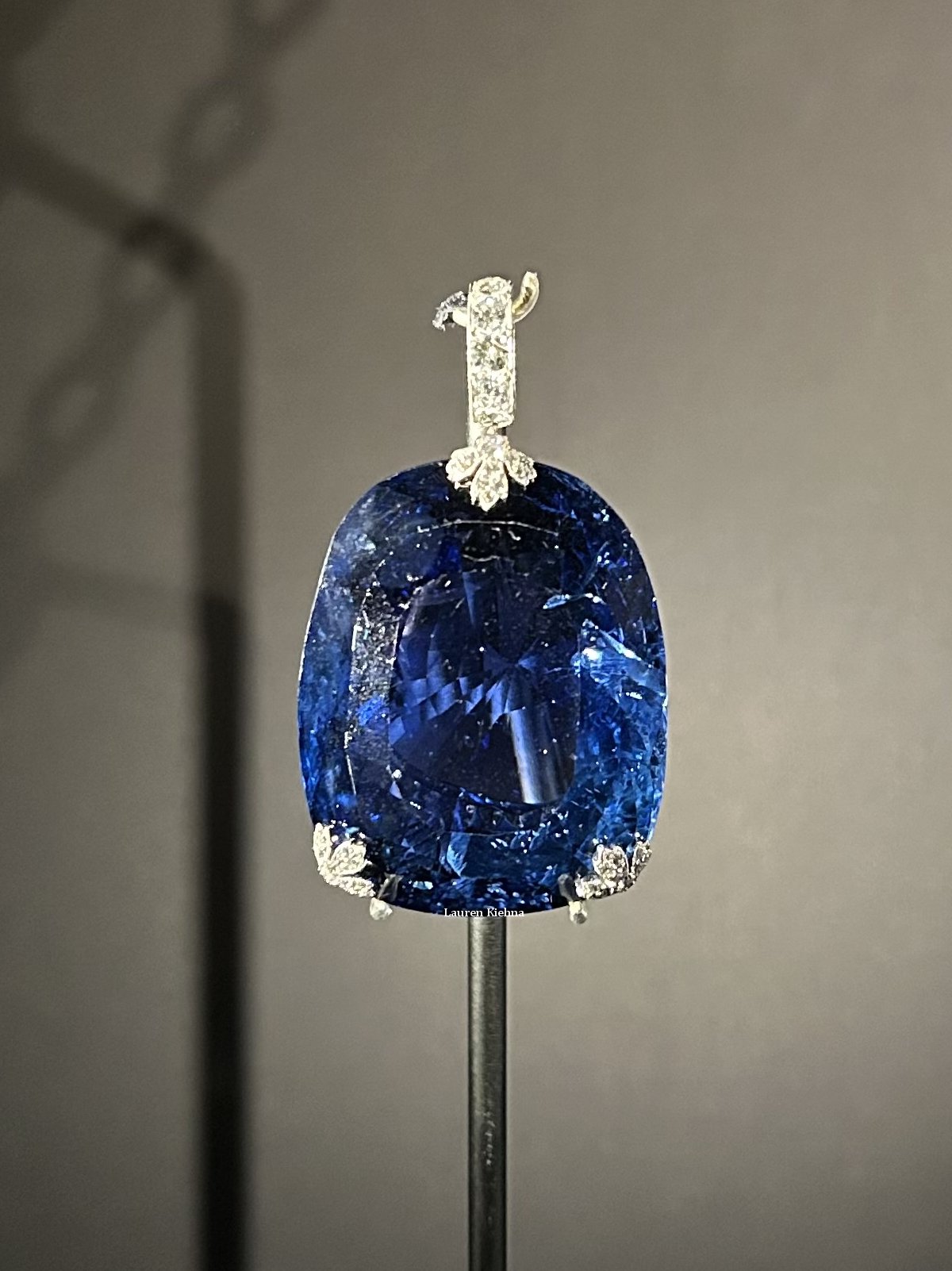
Perhaps the coming glamour of the coronation was on King Ferdinand’s mind when, in 1921, he purchased a grand sapphire, set in a platinum and diamond pendant, from Cartier. The jewel, made in 1913, had been exhibited after the war, and other royals—including Marie’s first cousin, Queen Victoria Eugenie of Spain—had been greatly tempted by the incredible bauble. Ferdinand splashed out 1,375,000 francs for the jewel, paying the bill in installments.
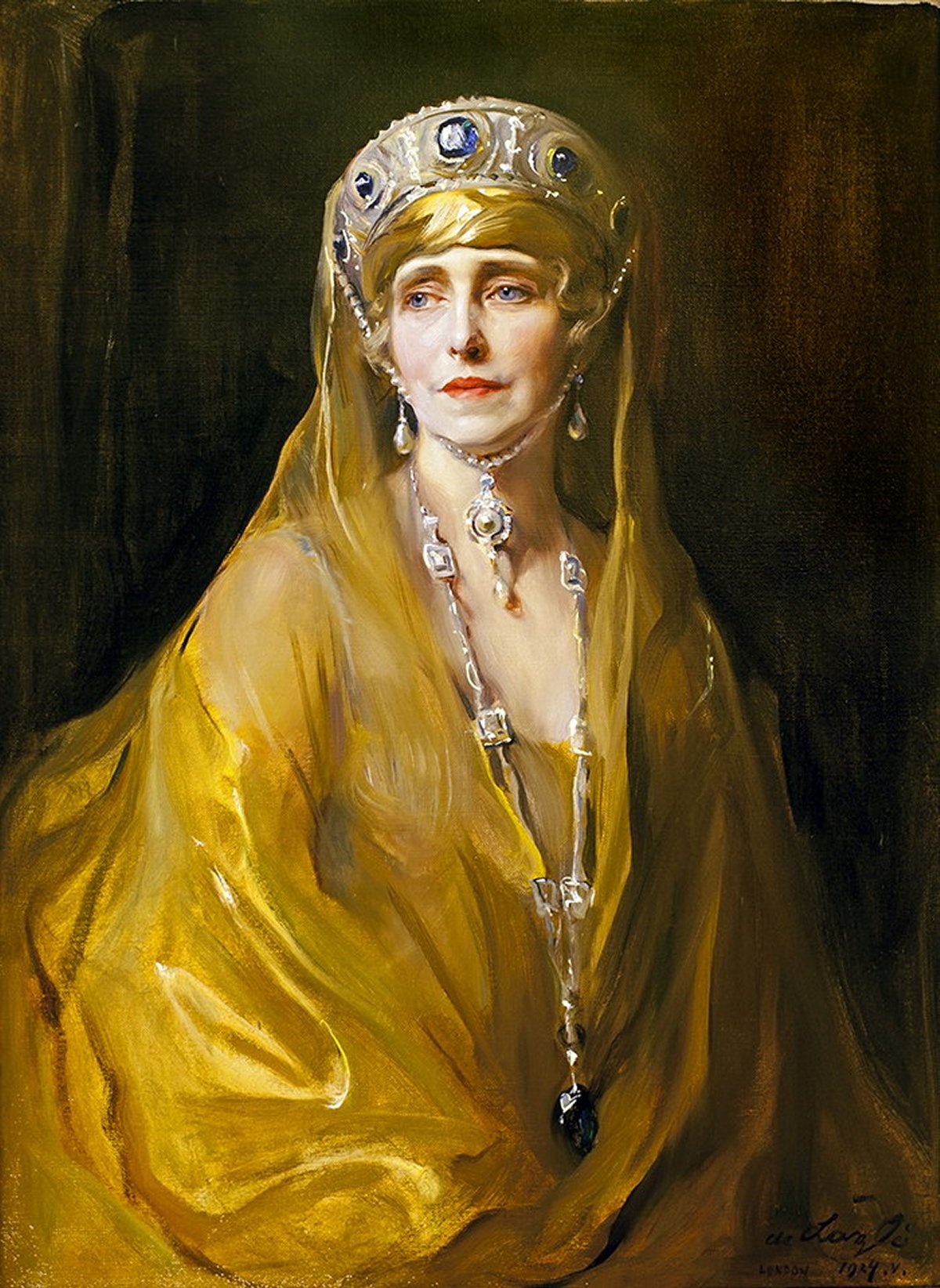
Marie was absolutely enamored by the sapphire, and she wore it often with the enormous diamond and sapphire tiara that had once belonged to one of her Romanov aunts, Grand Duchess Vladimir. In 1924, she sat for the portrait artist Philip de László in London wearing both the sapphire tiara and the sapphire pendant.
Soon, though, the royal house of Romania was plunged into chaos. Ferdinand died after a battle with cancer in 1927, and the couple’s eldest son, King Carol II, caused more than one dynastic crisis, first abdicating in favor of his young son and then storming back on to the throne five years later. Carol’s actions caused a permanent rift with his mother. She passed away in 1938, and her jewels were inherited by a royal family in disarray.

In 1947, King Carol’s son, King Michael, was compelled to abdicate, ending the monarchy in Romania for good. The family decided to sell Marie’s grand sapphire to fund a life in exile. They retained the diamond sautoir that she wore with the pendant, but the sapphire itself was sold to the jeweler Harry Winston. In turn, he sold it to a wealthy Greek citizen, who presented it to Queen Friederike, the wife of King Paul of the Hellenes. The Greek monarchy was ultimately abolished, too, and eventually, the sapphire was sold again. It now belongs to the general collection of the Qatar Museums in Doha.
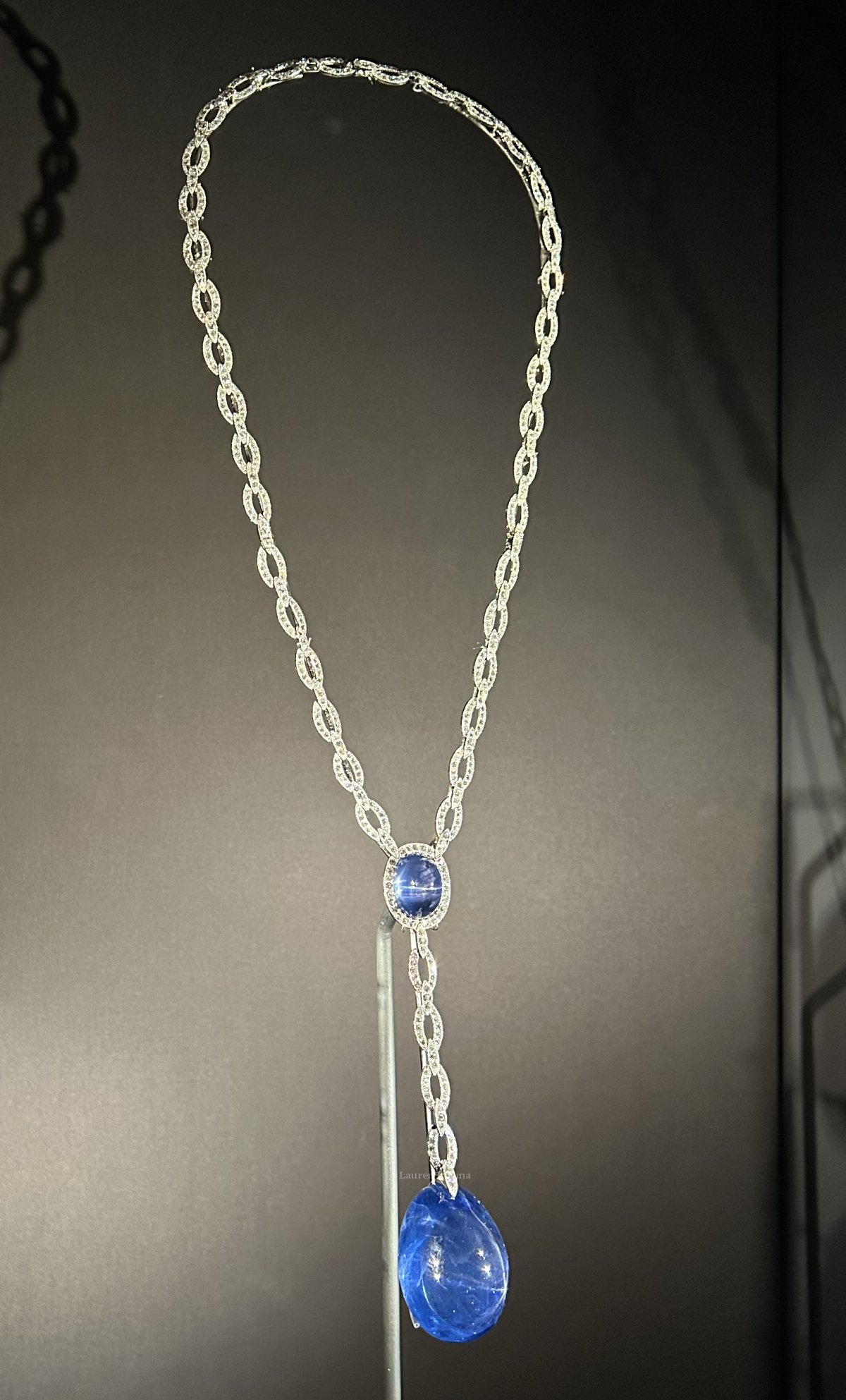
The second sapphire in the case at the V&A belonged to Queen Marie’s impulsive, fascinating younger sister, Princess Victoria Melita. The necklace, made by Cartier in 1911, features a pair of light blue cabochon sapphires, set in a sautoir-length necklace made of platinum and white and yellow gold. The plaque at the V&A states that the smaller of the two, the 35-carat sapphire set in a cluster, is a star sapphire, which “appears to show a star floating over the surface” of the cabochon. To my eye, both the 35-carat sapphire and the 311.33-carat pendant are both star sapphires.
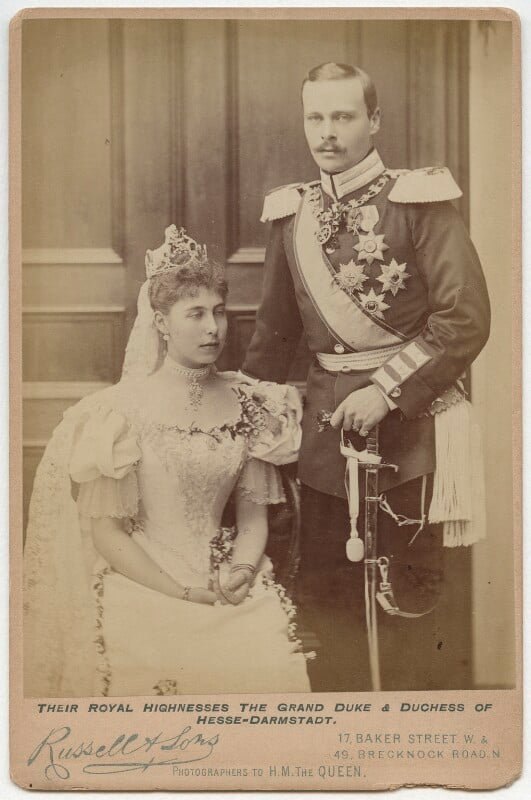
A year after her sister married the Crown Prince of Romania, Victoria Melita made a glittering match of her own. She married one of her first cousins, Grand Duke Ernest Louis of Hesse, in 1894. The marriage was an arrangement coordinated by their families, especially their mutual grandmother, Queen Victoria. Before accepting the Hesse proposal, Victoria Melita had fallen in love with another cousin, Grand Duke Kirill Vladimirovich of Russia—but the Russian Orthodox Church forbade marriages between first cousins, so she was convinced to accept the Hesse marriage instead.
It was a mistake. Ernest Louis and Victoria Melita were an extremely poor match. They had a daughter, Princess Elisabeth, a year after their wedding, but soon enough the marriage fell apart. They had to wait until the death of Queen Victoria before divorcing in 1901. Two years later, their daughter died, adding more tragedy to the situation.
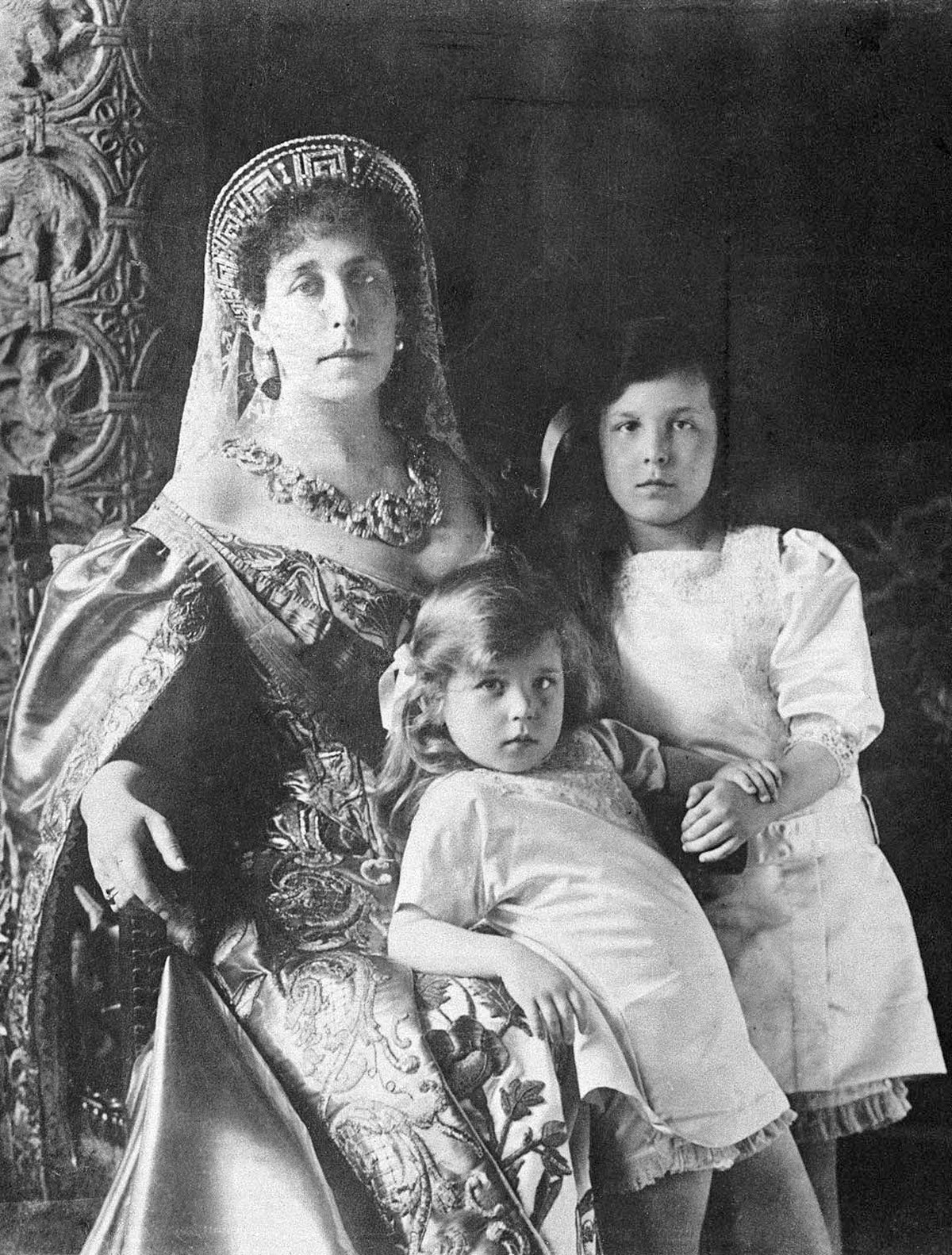
While attending the coronation of Emperor Nicholas II, Victoria Melita had rekindled her flirtation with Grand Duke Kirill. After her divorce, the couple decided to marry despite both religious and family objections. After their wedding in 1905, they went into exile in Paris. Eventually, Victoria Melita converted to orthodoxy, taking on the name Victoria Feodorovna. When the royal family line dwindled in Russia, Nicholas II reluctantly reinstated them, and she became Grand Duchess Victoria Feodorovna. Their two daughters became Princess Maria Kirillovna and Princess Kira Kirillovna. Above, Victoria poses for a photograph with her daughters, wearing full Russian court dress.
The Russian Revolution loomed. In 1917, Kirill and Victoria went into exile in Finland with their daughters. A few months after their arrival, Victoria gave birth to their only son, Vladimir Kirillovich. After the deaths of so many of their family members, Vladimir eventually became head of the imperial family in exile. Today his daughter, Grand Duchess Maria Vladimirovna, is one of the claimants of that role. (This week, we learned that Maria Vladimirovna has become a grandmother for the second time. Her daughter-in-law, Princess Victoria, gave birth to a daughter named Princess Kira Leonida Georgievna on Monday. Kira already has a big brother, Prince Alexander Georgievich.)

Between their imperial reinstatement in 1908 and their revolutionary exile in 1917, Kirill and Victoria acquired the remarkable diamond and sapphire sautoir from Cartier. The text of the book produced to accompany the Cartier exhibition at the V&A states, “The jewel was made for Cartier stock in 1911 and sold in 1912 to Grand Duke Kirill Vladimirovich (a grandson of Tsar Alexander II) who gave it to his wife, Princess Victoria Melita (a granddaughter of Tsar Alexander II and also of Queen Victoria).”

Indeed, photographs from the period both before and after the Russian Revolution show Victoria Feodorovna wearing the sapphire and diamond sautoir. The distinctive chain-link style of the necklace can be spotted in this photograph of the grand duchess. The image was taken around 1914.
And here, she wears the necklace in a portrait taken in the late 1910s or early 1920s. By this time, the family was seriously feeling the pinch of exile, and Victoria decided to sell her sapphire necklace. The buyer was someone familiar: her older sister, Queen Marie of Romania. After she purchased the necklace, Queen Marie gave it to her eldest daughter, Princess Elisabeth, as a present to celebrate her (unfortunately doomed) marriage to Crown Prince George of Greece in 1921.
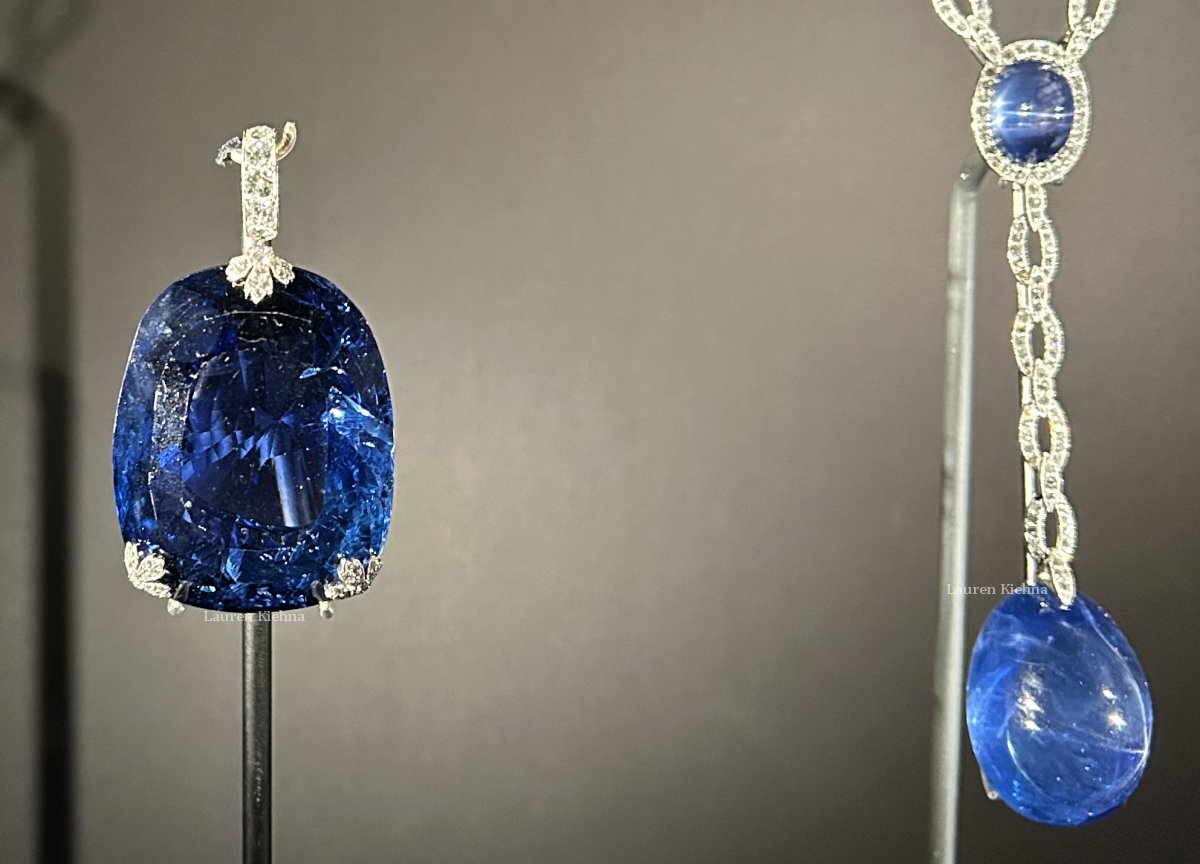
Today, the star sapphire sautoir is part of a private collection in Switzerland, but it has been reunited for now with its sister sapphire as part of the V&A exhibition. But, confusingly, many visitors to the exhibition may never be able to make the connection between the Cartier sapphires and their royal owners. The display plaque names both Queen Marie and Grand Duchess Victoria Feodorovna as owners of the two jewels, but it does not explain that the two were sisters—or that, at one point, Queen Marie owned both of the spectacular gems. It’s an interesting oversight in an otherwise expertly-curated show.
Leave a Reply
You must be logged in to post a comment.